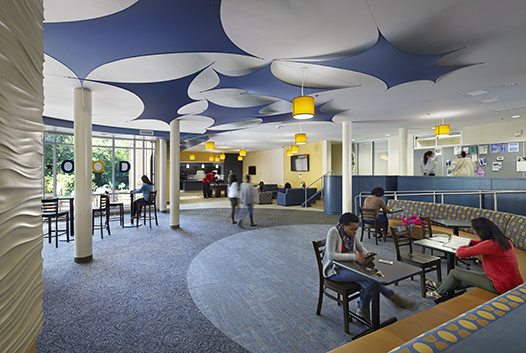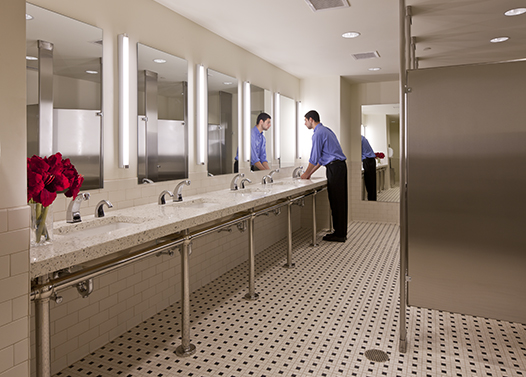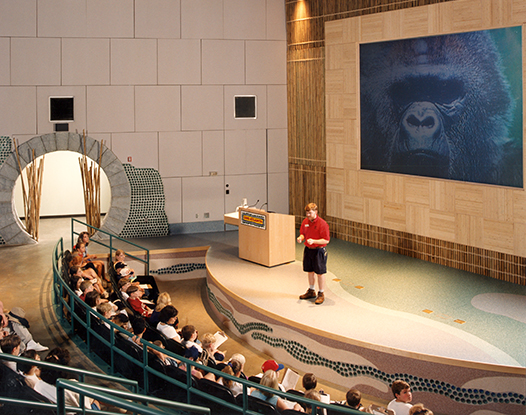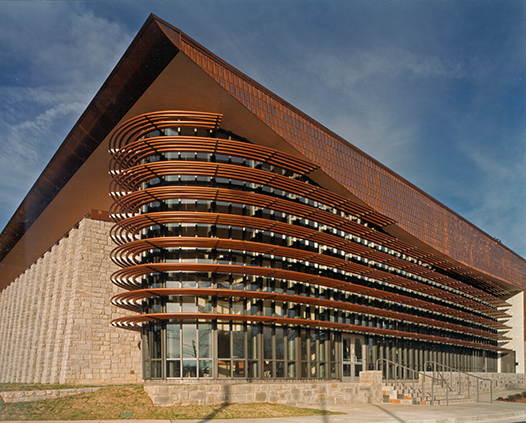Expertise
Materials
The U.S. Green Building Council estimates that the manufacture of building products is responsible for 40% of raw material extraction globally. Our sustainability experts seek environmentally responsible, innovative materials and opportunities for building reuse and renewal to reduce the environmental footprint and embodied energy of our designs.
Health
Beginning in 2013, LAS has been including health as a criteria in material selection decisions. LAS joined several architectural and engineering firms in seeking transparency and disclosure of chemicals of concern from product manufacturers.
High Recycled-Content Materials
The use of high-recycled products helps both to reduce the need for virgin materials as well as the generation of landfill waste. Some examples include the Martin Luther King Jr. Federal Building, which included numerous recycled materials, including countertops made locally using crushed bottles, Southface Eco Office lavatory counter made from 100% recycled plastic beverage and food containers, the composite shingles used to clad the Grand Bay NERR Visitors Center made from 100% recycled rubber from the automobile gasket and disposable diaper industries, and the back-lit wall at the Atlanta Zoo Conservation Action Resource Center formed with recycled Coca Cola bottles.
Rapidly Renewable Materials
The use of rapidly renewable alternatives to conventional building products can both reduce the environmental impact of building and provide a ‘natural’ palette of colors and materials. Rapidly renewable materials, as the name implies, are materials that regenerate quickly. Some examples include bamboo, which is a grass, and cork and rubber, which can be harvested without killing the tree from which they are harvested. The Zoo Atlanta Conservation Action Resource Center features bamboo panels, bamboo stalks and natural linoleum (made from linseed oil, powdered cork and other natural materials).
Salvaged Materials
One strategy for significantly reducing the environmental impact of the products used in the construction of buildings is to salvage materials that would otherwise wind up in a landfill. Some examples include the granite cladding at the Zoo Atlanta Conservation Action Resource Center and the Georgia Public Health Laboratory, which was salvaged scrap from the granite tombstone and monument industry. Wood from trees cleared at the site of the Joseph Jones Ecological Research Station was milled and used in the building structure. And removed sidewalks were used to create the gabion walls that form the natural stormwater management feature at the Southface Eco Office. The feature is spanned by an entry bridge constructed of salvaged lumber.




